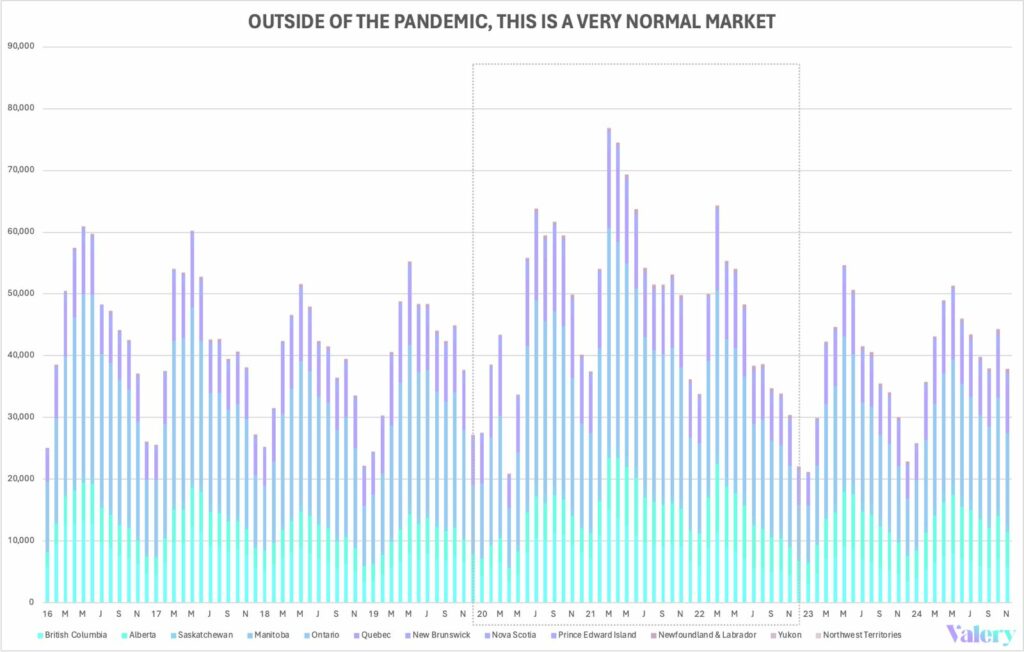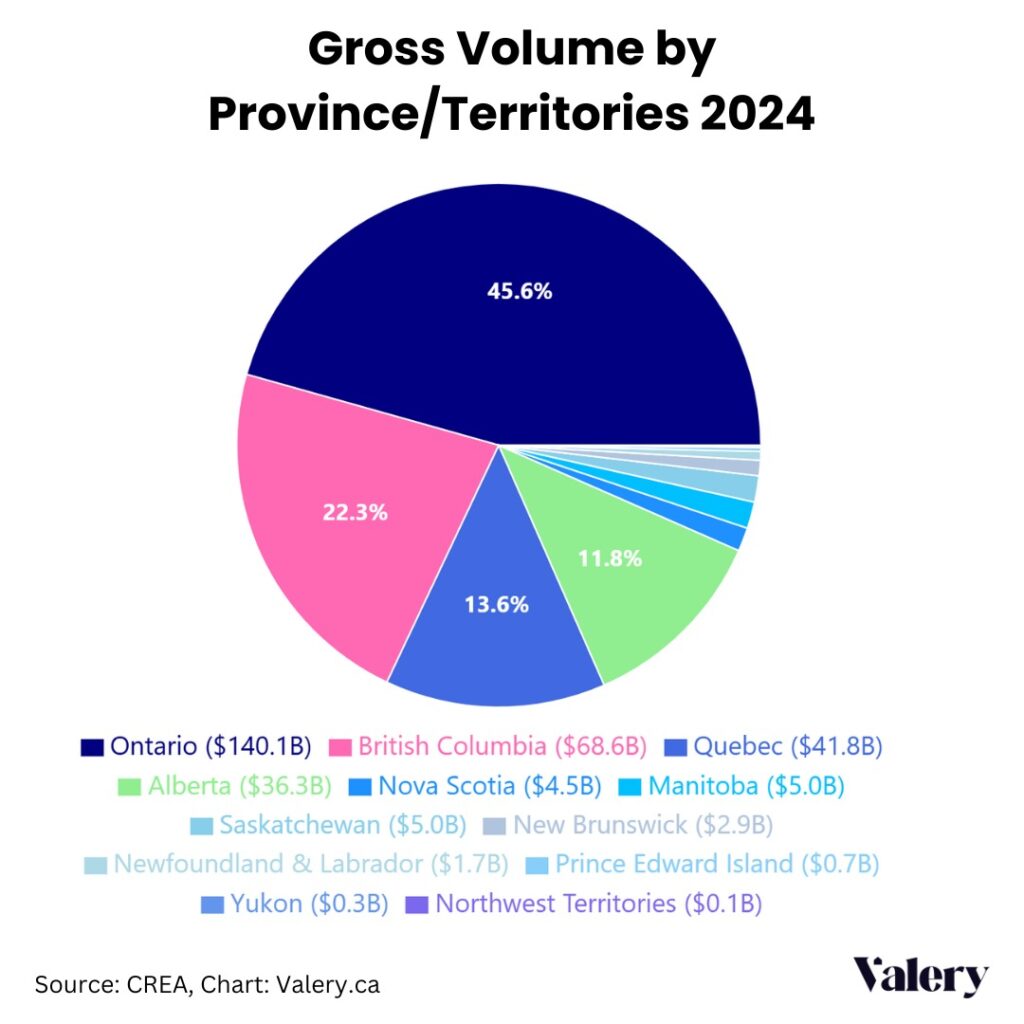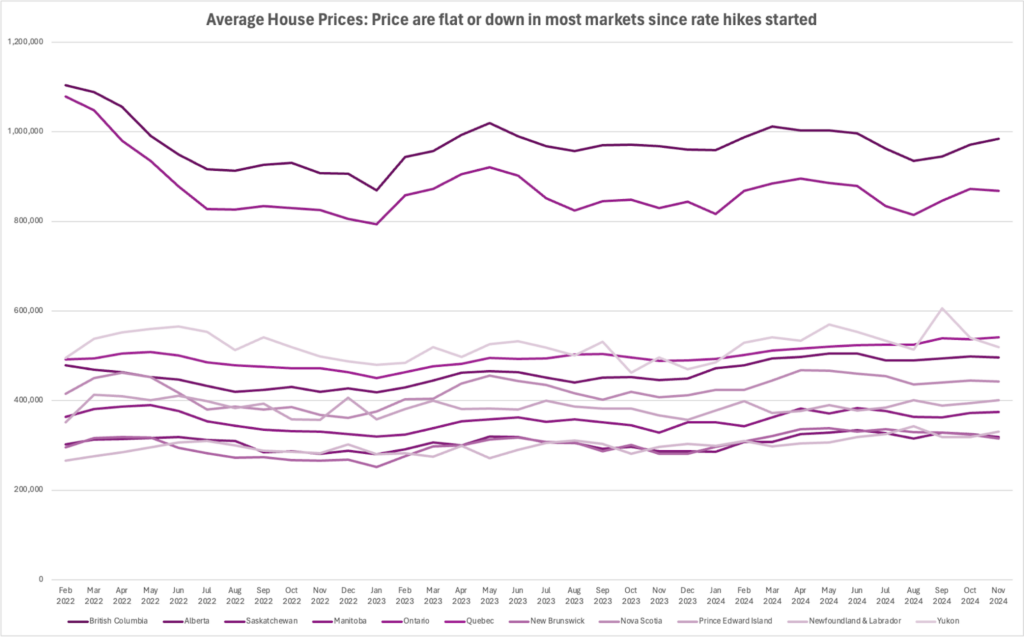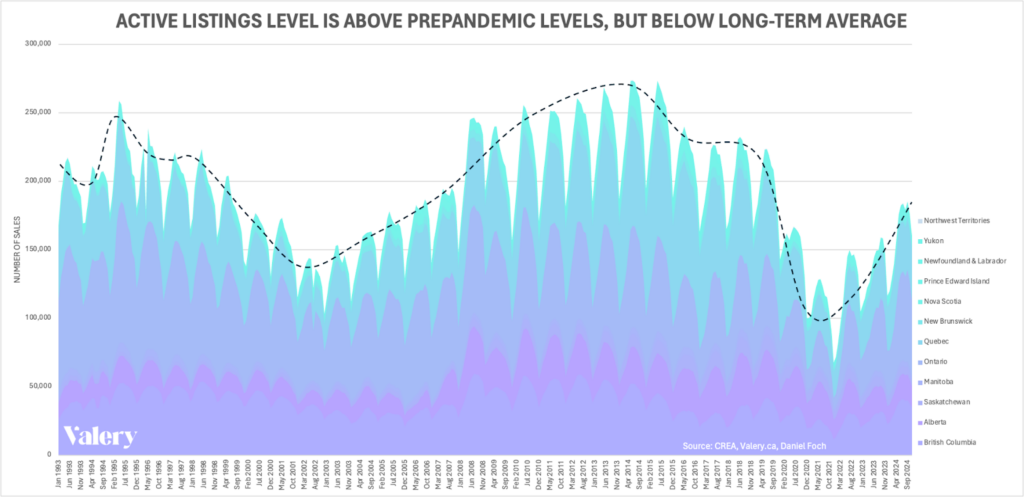Canadian real estate has all of the hallmarks of a great comeback story. Interest rates are falling. House prices are down from peak. Affordability is returning to the market. The government was throwing policy at the housing problem, despite warnings from the Bank of Canada. It sounds like the setup for a great recovery.
The only question is… when do we get there?
Or, more aptly: “are we there yet?”.
Instead of a familiar and predictable road, we’ve been left on a long and drawn out road trip. Countless familiar signs have passed us by, yielding no result. We’ve been stuck in a state of wondering if, not when, in fact, we’d see any signs of recovery appear.
For years we’ve heard reports from the industry of “buyers on the sideline” waiting for some factor to change in the real estate market equation. It would appear that the factor is whether or not prices are going up or down.
“Buy The Dip”
Is it possible you might see a rush of buyers trying their hand at the seemingly-impossible task of buying the bottom of the market? The age-old advice about “time in the market, not timing the market” seems to be ringing in my ear. At a minimum, the idea might be “buying the expletive dip”, as popularized by Wall Street Bets. Since we don’t have an online community of options-trading degeneracy in Canada, we focused our speculative fever on the housing market, until we couldn’t any longer.
And so, it appears when people said they’re waiting to see the “dip” or the “bottom” of the real estate market, they might have been looking in the rear-view mirror. This isn’t to say that the bottom is “in” per se. There just seems to be a lot more buyers after 3 months of consecutive growth in price & volume than there was during 3 months of declining price & volume.
This is the ironic part about the whole “market timing” thing. If you want to bottom-tick the market, you have to be buying on the way down. If you’re the buyer submitting below-market offers and pulling sales prices down, you create the dip – you don’t buy the dip.
You create the market, you don’t time the market.
Recovery, or relief rally?
Until last month, data hadn’t really indicated even the slightest chance at recovery. September appeared out of character, with the typical back-to-school rush surprisingly muted against the backdrop of the US election, breaking “fall market” seasonal norms to the downside. Staying true to this new and contrarian character, Canadian real estate now seems to be breaking seasonal norms to the upside, heading into November, a month where the market is typically slowing down toward the holiday season.
Should we see sustained upward pressure on the market heading into December, it would be reasonable to imagine that the market is seeing a resurrection of volume from lower rates, increased buying power, and optimism around new mortgage policy.
Increased Buyer Activity Pushes Sales Higher

Source: CREA, Valery.ca
National home sales climbed 2.8per cent in November compared to October, marking the second consecutive month of gains and a cumulative 18.4per cent rise since May. This jump comes after months of subdued activity earlier in 2024, which was largely blamed on lingering “higher for longer” interest rates.
With the Bank of Canada now slashing rates at recession-ready pace, sidelined buyers have apparently been pulled back into the market, and the numbers show they’ve arrived in droves.
Not surprisingly, activity was strongest in Canada’s usual real estate powerhouses—Greater Toronto, Greater Vancouver, Calgary, and Montreal. Smaller cities in Alberta and Ontario also reported double-digit increases in sales, indicating a broad-based uptick. Ontario seems to be back to its former glory of taking nearly half of the monthly dollar volume of sales. However, this surge in activity raises a critical question about whether it represents a genuine recovery or just another temporary spike driven by policy tweaks that artificially boost demand in an attempt to soften the blow of recession and unemployment in 2025.
Realistically, this market looks a lot more like a typical year (see 2016-2019 above) but it feels high relative to last year’s lows, and low relative to the pandemic’s highs.

Sellers Hold the Upper Hand
For those looking to sell, the market continues to tilt firmly in their favor. The sales-to-new-listings ratio (SNLR), which measures market balance, rose to 59.2% in November. That’s a significant jump from the 52%-53% range seen earlier in the year, signaling a tightening market. With fewer new listings coming to market (down 0.8% month-over-month), buyers are left to compete for an ever-shrinking pool of homes.
This imbalance is further reflected in the months of inventory metric, which fell to just 3.7 months nationally – the lowest in over a year. For context, a balanced market typically has 4 to 6 months of inventory. The current figure underscores the fact that supply simply isn’t keeping up with demand, making conditions increasingly competitive for buyers.
Prices “rise”… or did they?

Source: CREA, Valery.ca
November saw the first notable increase in home prices in nearly 18 months. The National Composite MLS® Home Price Index (HPI) rose 0.6per cent from October, while the actual national average sale price jumped by 7.4per cent compared to November 2023. These price increases suggest that the demand surge is starting to put upward pressure on home values, particularly in urban centers and desirable smaller markets.
However, the market still shows early signs of recovery rather than runaway growth. While it’s easy to celebrate any price growth, the long term trend still looks like the “flat market” I’ve been droning on about for the last few years. The HPI remains 1.2per cent lower year-over-year, highlighting that despite rising demand, the market has not fully rebounded from the downturn caused by the interest rate hikes of 2022 and 2023, which reduced affordability and buyer confidence. This ongoing recovery remains fragile, with the market still vulnerable to external factors. Future rate changes, policy shifts, or economic uncertainty could easily disrupt the momentum.
High Supply, High Stakes

Source: CREA, Valery.ca
CREA seems to feel that the inventory situation reveals a chronic problem: Canada’s housing supply continues to fall short of demand. By the end of November, there were just over 160,000 properties listed for sale nationally. While this is 8.9per cent higher than a year ago, it remains well below the long-term average of 178,000. It seems the industry wants us to interpret this as a sign that we have a structural supply deficiency. On the contrary, it could also be interpreted as a lot of room to grow.
With all this considered, this is still the highest supply environment we’ve seen since the beginning of the pandemic, with a clearly visible and steep upward trend in active listings each year since the rate hiking cycle began.
Looking ahead, the fate of the Canadian real estate market may hinge heavily on the performance of the upcoming spring market. While recent momentum and lower interest rates have provided some optimism, several headwinds could still derail the recovery.
The traditional spring market typically sees the highest volume of transactions and often sets the tone for the rest of the year. However, mounting concerns about a potential recession, declining population growth rates, and rising unemployment could dampen buyer enthusiasm. These economic pressures might outweigh the positive effects of lower borrowing costs and increased affordability.
The key question remains whether the current momentum can build enough steam to overcome these challenges. Early indicators from December and January activity will be crucial in gauging whether this recovery has staying power or if it’s merely a temporary response to policy changes and rate cuts.
Final Thoughts
It’s hard to shake a sense of déjà vu. Time and time again, interest rate cuts are rolled out as a quick fix and a perceived boost to the housing market, only to exacerbate the underlying issues and kick the can down the road.
Yes, lower rates make borrowing more affordable in theory, but they do not solve the core disparity between income and house prices, negating the benefit for many buyers. Relaxed mortgage rules might help some secure financing, but they also prop up demand in a market already starved for supply.
For first-time buyers, the dream of homeownership remains elusive. Rising prices and dwindling inventory create significant challenges, forcing them to compete against wealthier buyers or investors. While sellers and existing homeowners may take comfort in the rising value of their properties, the broader reality is less optimistic, with a housing market that continues to deepen the divide between the haves and have-nots.
About the Author
Daniel Foch is the Chief Real Estate Officer at Valery.ca, and Host of Canada’s #1 real estate podcast. As co-founder of The Habistat, the onboard data science platform for TRREB & Proptx, he has helped the real estate industry to become more transparent, using real-time housing market data to inform decision making for key stakeholders. With over 15 years of experience in the real estate industry, Daniel has advised a broad spectrum of real estate market participants, from 3 levels of government to some of Canada’s largest developers.
Daniel is a trusted voice in the Canadian real estate market, regularly contributing to media outlets such as The Wall Street Journal, CBC, Bloomberg, and The Globe & Mail. His expertise and balanced insights have garnered a dedicated audience of over 100,000 real estate investors across multiple social media platforms, where he shares primary research and market analysis.





